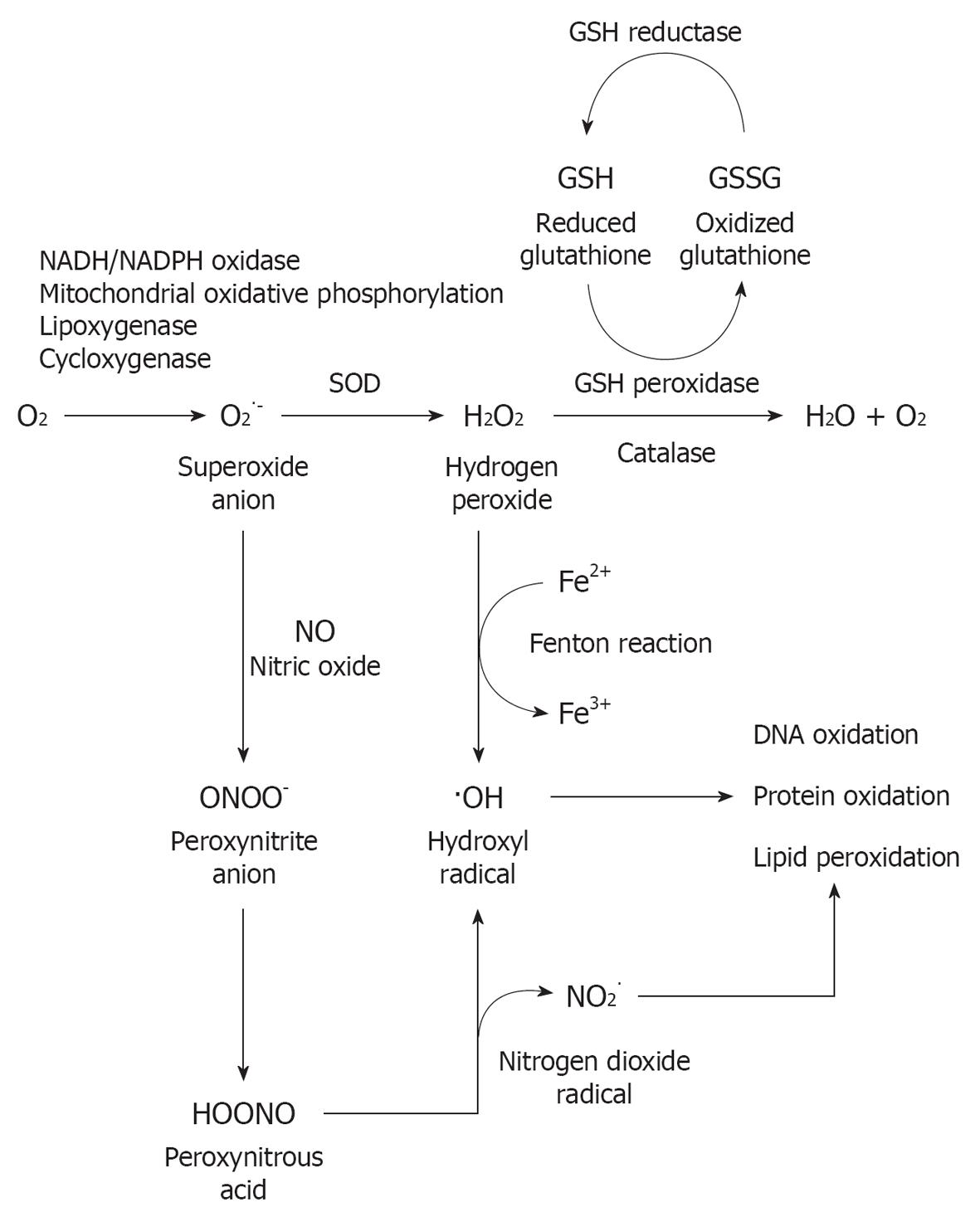Copyright
©2013 Baishideng.
World J Otorhinolaryngol. Aug 28, 2013; 3(3): 58-70
Published online Aug 28, 2013. doi: 10.5319/wjo.v3.i3.58
Published online Aug 28, 2013. doi: 10.5319/wjo.v3.i3.58
Figure 2 Mechanism of oxidative cellular damage.
Mechanism of oxidative cellular damage. Reactive oxygen species (ROS, including superoxide anion, O2·-, and hydroxyl radical, ·OH), reactive nitrogen species (RNS, nitrogen dioxide radical, NO2·), and lipid peroxides are generated as result of oxidation of oxygen (O2) to superoxide anion by multiple cellular oxidases. Oxidases convert oxygen to O2·-, which is then dismutated to H2O2 by superoxide dismutase (SOD). H2O2 can be converted to H2O by catalase or glutathione peroxidase (GSH-Px) or to hydroxyl radical (·OH) after reaction with Fe2+. In addition, O2·- reacts rapidly with nitric oxide (NO) to generate peroxynitrite (OONO-). This further leads to production of NO2· and cellular damages through membrane lipid peroxidation and oxidation of DNA and proteins.
- Citation: Wong ACY, Froud KE, Hsieh YSY. Noise-induced hearing loss in the 21st century: A research and translational update. World J Otorhinolaryngol 2013; 3(3): 58-70
- URL: https://www.wjgnet.com/2218-6247/full/v3/i3/58.htm
- DOI: https://dx.doi.org/10.5319/wjo.v3.i3.58









